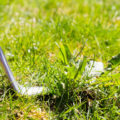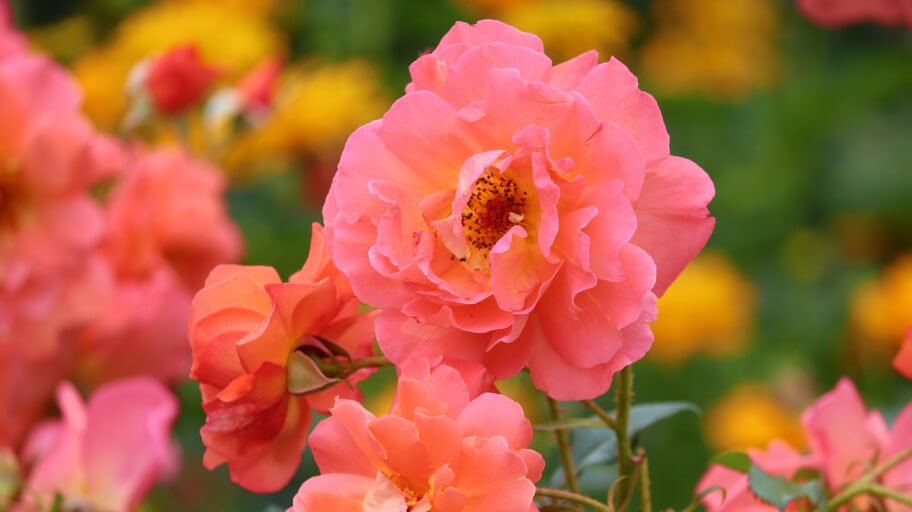
Planting hedges near a fence or around your house can give you a sense of privacy and even act as a windbreak. Unlike a lawn that has to be meticulously cared for, hedges are relatively low maintenance and can survive the hot Australian weather, which makes them attractive for a lot of people who don’t have too much time to spend in their garden. All you need is a free afternoon, a few hedge plants and some guidance. If you need that extra help about how and when to plant hedges, you can find this in the handy guide below.
How far apart do you plant hedges
When planting a hedge, spacing is of great importance. If planted too close, the roots will compete with each other for nutrients and water, which will result in poor growth. However, if planted too far apart, it will take a significantly longer amount of time to get your dense hedge look. And if you are doing that for privacy reasons, your project falls flat.
A general rule of thumb is the following: Determine the average maximum height which your hedge will achieve when fully grown. Then divide this number by three and the result that you get is the spacing that you’ll need to use between your plants.
By knowing the spacing that will be required between your plants, you’ll also be able to calculate how many plants you’ll actually need for your hedge. Another tip at this point is to always purchase a few additional plants in case you’ve under or overestimated your spacing or some of the plants simply don’t make the cut.
When to plant hedges
Knowing when to plant a hedge is vitally important because the temperature of the air and soil plays a big role in determining whether your hedge plants take root and thrive, or whether they will wither and not take root properly.
The best time of year to plant hedges in Australia is considered to be late autumn to early winter. The reason why spring is not recommended as the planting season for hedges is because while the air temperature may be improving from the winter, the soil is still cold and could even be frozen or waterlogged. These conditions are not suitable for planting hedges and are a good telltale sign that you should not be planting hedges if you notice this.
How to plant a hedge properly
Depending on the size of your garden and the length of your expected hedge, planting a hedge could take a couple of hours or even be an activity that you carry over to the next day.
Equipment and materials you will need:
- Spade/shovel
- Gardening fork
- Tape measure
- Wheelbarrow
- Watering can
- Secateurs
- String
- Gardening gloves
- Mulch
- Seaweed solution
- Your hedge plants
So, without further ado, here are the steps involved in planting a hedge:
- Plan where your hedge will go.
This is an important step because you want to avoid potential issues with your neighbours regarding the height of the hedge obstructing their view or leaves falling onto their property. If your hedge will be along a wall or a fence, consider planting at least 60 cm away from such a structure to ensure your hedges will have room for growth, while at the same time, not causing any structural (and potentially legal) damage.
- Clear the turf.
If the area where you’d like to plant your hedge has grass on it, it will need to be removed in order for you to clear the soil. Use a shovel or spade to clear the area. To ensure that you’re going in a straight line, place a string or another straight object along which to measure your efforts and the grass you want to remove. A wheelbarrow could be handy for helping you store your discarded turf and remove it to another location.
- Dig your holes.
It’s time to dig the holes for your hedge plants. Make sure that you dig about the depth of the plant pot in which your hedges were originally planted and around twice as wide to enable the roots to spread out more evenly. You will want to ensure that your soil is crumbly and not too fine like dust. A garden fork can be used at this point to tease out the soil a bit to see that you have soft soil, but soli that’s also not too fine. Using a tape measure, measure out the distance between your plants, which you have already calculated.
Tip: Don’t add compost or fertiliser in the freshly dug hole because it will degrade over time, ultimately affecting the height of the hedge. You can, however, add mulch. For more on this, keep reading. - Tease out the roots.
You now need to remove the hedge plants from the plant pots in which you purchased them. The roots should generally have the shape of the plant pot. Using your gloved hands, gently tease out the roots to give them more space and air to breathe. When ready, you can place the plant in the hole which you’ve just dug.
- Compact the soil.
After placing the plant in the hole, you need to backfill it with soil and then compact it all around to ensure small air bubbles are removed and that the roots are placed nice and sturdy within the hole.
- Add mulch.
If you want your soil and plant roots to be protected from the natural elements, add mulch around the base of the plant but not too near the stem, as this could lead to stem damage, which can ultimately affect the growth of your hedge.
- Water with a seaweed solution.
Add one cap full of seaweed solution to nine litres of water in your watering can, after which you should liberally water your newly planted hedge. It’s also wise to water your new hedge regularly, at least every week during its first year so that its roots and the plant take shape and grow well.
Takeaways
Planting a hedge can be a truly rewarding experience, especially when you see the results for yourself. If you’re ready to plant a hedge, here’s what you need to know:
- Planting a hedge should take place in late autumn or early winter;
- Avoid planting in spring;
- Determine the spacing that you’ll need using the rule of thumb explained above;
- Clear the area of turf and grass first;
- Dig the holes for the plants, making sure the holes are twice as wide as the plants’ root systems;
- Do not add fertiliser or compost to the hole;
- Place the plant in the hole and compact the soil around it;
- Add mulch, avoiding placing it near the stem to avoid damage;
- Water the hedge plants with a seaweed and water solution;
- Enjoy your beautiful new additions to your garden!
Enjoy a beautifully planted hedge today!
Rely on the professionals to give you a neat hedge in your garden.








